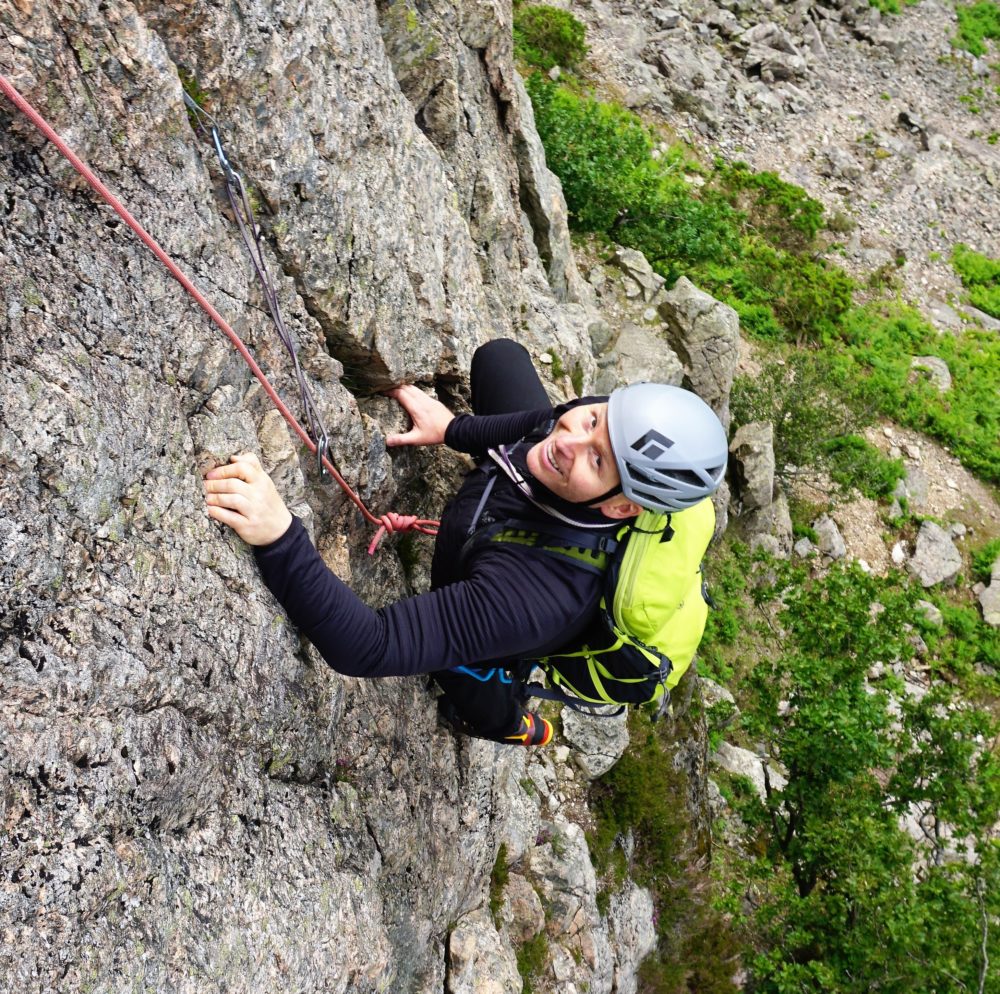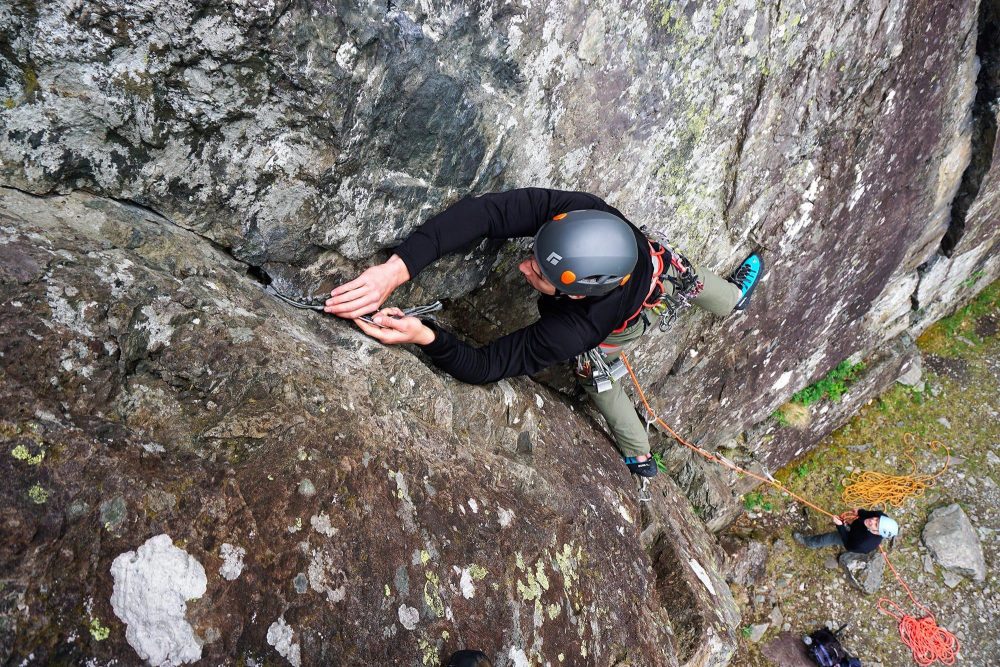Traditional Climbing on a Single Rope
So, traditional climbing on a single rope - old school or maybe just a modern take on things?

How many climbers, who lead to a moderate climbing standard, such as Severe (S) or Hard Severe (HS), climb on double ropes? And how many times when out climbing does it feel like the ropes are disorganised and tangled and it's sometimes a struggle to ‘pay’ out one of the ropes when belaying or take it in quickly if needed? How many times have you led a climb, placed traditional gear and, when you are 10m up, you look down and you've only clipped one of your half ropes, because all the placements and weaknesses in the rock have all been on for example, your left side?
A leader fall on a half rope, if the half rope is less than 8.5mm, is very hard, if not impossible, to hold. Also note that the half rope you've just taken a leader fall on was tested with a 55kg weight on the end. The question I have is, at the moderate level of lead climber, would it not be both safer and easier to climb on perhaps a 9.6 mm full weight rope? Sure, more thought needs to be put into the traditional gear you place and the runners you use. You need to ensure that the runners are often extended so that you're always soft on the gear you place, the rope doesn't lift any placements out and there's no potential for a sideways pull, which would go against the downward pull you've potentially placed the wire or hex for.

It would take some tweaks to the gear that you carry, perhaps ditching the sport style runners (quickdraws) that are short and stiff and offer little, if any, softening to the leader placed protection, increasing the potential for a wire to be lifted out, and swapping them for some longer are more flexible runners that you can extend easily.
The extendable runners are simple to pull together and offer more options when, as a traditional climber, you often need to be creative when it comes to finding safe anchors to clip the lead rope to, which in turn gives you extra protection when leading.
Very narrow 60cm taped slings work very well in this instance, sitting neatly in a standard snap link karabiner when 3 strands are clipped to shorten the sling to more of a standard length.
I do think that this single rope technique to traditional climbing for many moderate grade climbers is a very good approach and perhaps safer and less ‘fussy’.

We tend to get fixated with double roped techniques and all the complexities that this involves, let alone the extra weight of a 60m half rope and the sometimes less-organised mess of both ropes twisted and looped together on a narrow belay ledge.
Double ropes certainly have their place but do we need to always default to them even on more moderate terrain when both the leader and second have enough on their plates?
I could talk through all the complexities and benefits of lead climbing on double ropes on harder climbs but it would take away the simplicity and perhaps is a step, at this stage of ones climbing apprenticeship, too far. Give it a go, climb more simply, create less fuss, move more efficiently and it may even be safer if the lead climber did actually take a fall.
Just a thought!
Adrian Nelhams

Petzl website –
Why the 55 kg test mass for half ropes?
The half rope dynamic test is done on a single strand, as the strands can be used separately. However, it is not a single rope and is not designed to withstand multiple hard falls on a single strand. On one strand with 80 kg, a half rope holds between 1 and 2 falls; it is difficult to differentiate between ropes with such a small number of falls. And in reality, on a big fall, both ropes usually come under tension before the climber's fall is arrested. In this case each rope supports part of the user's weight. For these reasons the standards committee decided: half ropes must hold 5 falls at 55 kg. The 5 falls at 55 kg secure the usage of a half rope. Attention, this does not mean that you can lead belay a climber on one strand of a half rope.
My note - But in reality when traditional climbing we do often lead on a single strand until we find protection to place for the second strand.
Related News Articles

ISM Virgin Peaks Expedition 2024 - Tien Shan Kyrgyzstan
ISM trip report of our trip into a very remote part of the Tien Shan Mountains, Kyrgyzstan
Read Article
Getting Into & Developing Your Climbing
Indoor bouldering is a great place to start if you want to try climbing for the first time. You can…
Read Article
ISM Virgin Peaks Expedition 2023 – Tien Shan Kyrgyzstan
ISM trip report of our trip into a very remote part of the Tien Shan Mountains, Kyrgyzstan.
Read Article
Kyrgyzstan Faces 2022
This year ISM celebrated 25yrs of expedition climbing in Kyrgyzstan, with a fantastic trip to the Fergana Range in the…
Read Article



